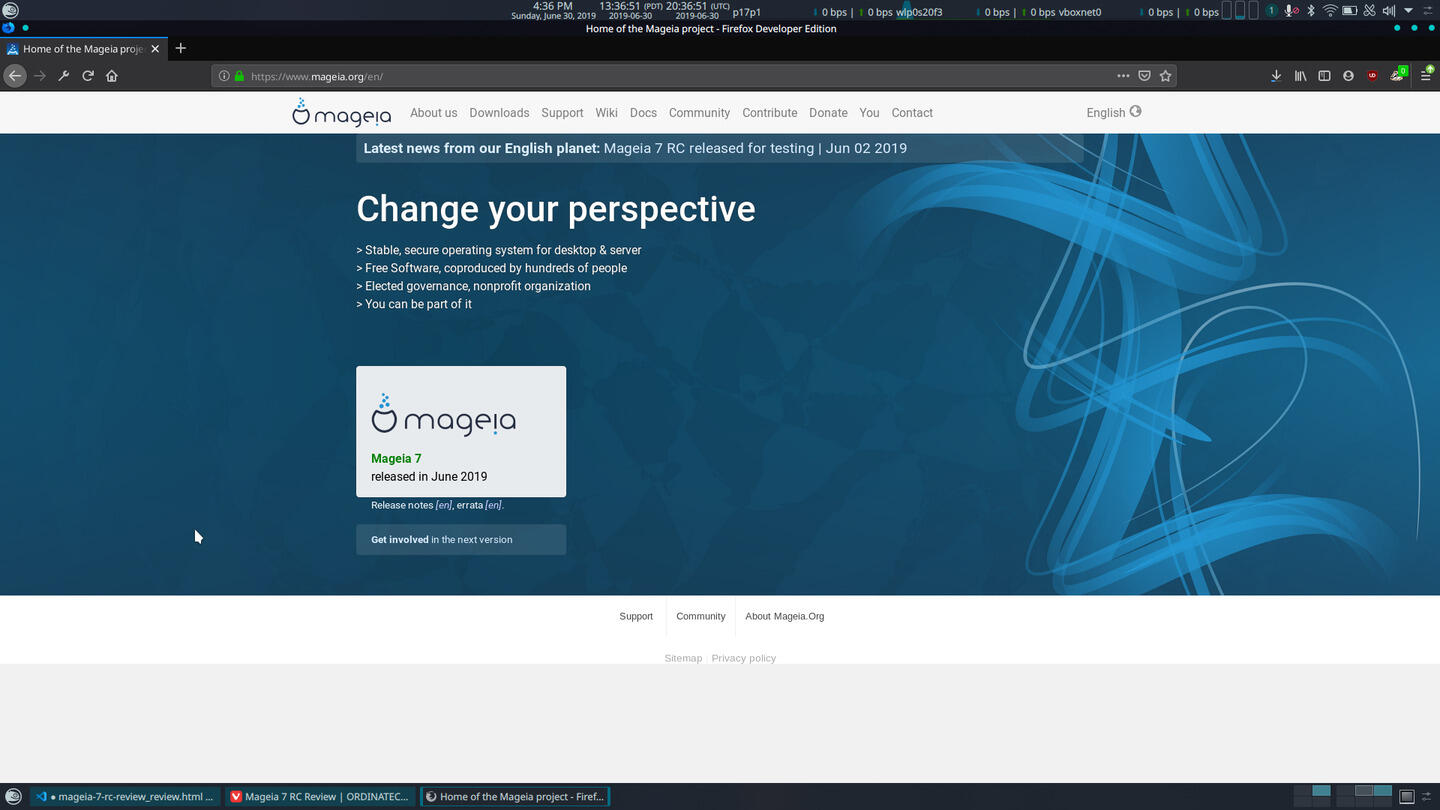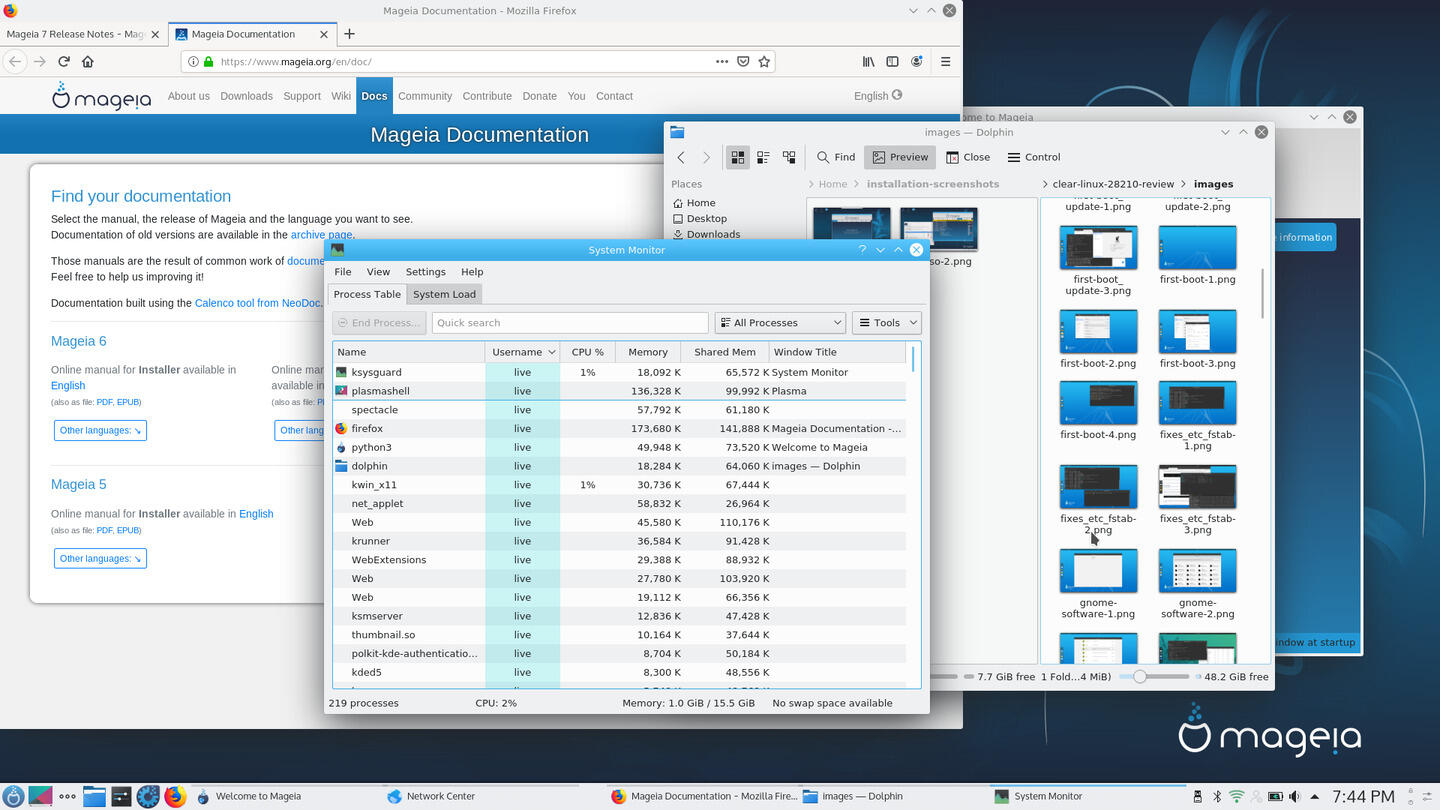Introduction
Before even beginning an installation of a GNU/Linux distribution there are a few things that the distribution can provide its users for a smooth installation experience -- besides a good installer. This mainly centers on easy to find information on the project's website, including a prominent link to a download URL, a prominent link to shasum and GPG key URLs, and instructions for verification. A portal for documentation with guides for installation to and other topics is also useful.
Mageia provides these resources very well. One notable feature of the website, not found on any other GNU/Linux distribution website, is that the user doesn't even need to search for a link to verification data or instructions, whether the links are easy to find or not. As soon as the user initiates a download, the browser is redirected to a page with copy and past-able instructions for verifying the download. Even the filenames are not generic but specific to the release. Apparently the developers of the Mageia have put some work into automating this.
Installation Media
Mageia provides a variety of installation media -- a Classical, a Live ISO and a Network installation. The Classical installation media are available in 32bit or 64 bit. The Live ISO environments available are Plasma, GNOME, or Xfce, where all but the Xfce are available in 64bit only. The options for Network installation is available with Free Software and Non-Free for both 32bit and 64 bit.
Download
The link to the available installation images is very prominent on the Mageia website, as the Downloads page is a main menu item. The current release's notes and errata are also easily found on the main page under the featured item on the page, the current release version, so users will not be surprised by any issues and will have solutions if available.

The Mageia Website Main Page
The current release is the featured item on this page. The notes and errata for the release are also easily found.
Clicking the Download main menu item takes visitors to a page with a "choose your own adventure" type of navigation, beginning with a choice of installation type, that will take them to the installation image of their choice. The different choices are documented with pop-up descriptions and links to relevant documentation and resources are easily found .
Downloading Mageia Plasma Live ISO
A series of choices leads to the desired installation medium.
Verification
As soon as the user clicks the download link, the user is redirected to a page of instructions for verifying the integrity of the download and the authenticity of the image. While this is a very thoughtful design that shows a high level of refinement not found in other distributions' websites, I had a few problems with the verification process, perhaps due to openSUSE Tumblewwed's implementation of GPG.
Verification of Installation Image
Also it should be noted that the GPG verification is of the SHA checksum and not the ISO itself, not typical but still secure as long as the checksum is tested first and then the authenticity of the downloaded checksum file used for checksum comparison is verified.
Live ISO Environment

Click on any of the thumbnails below to see a slideshow of the screenshots.
Conclusion
Mageia offers users a refined and professional distribution -- notwithstanding a few flaws that hopefully will be corrected soon. This quality is also apparent in the resources available to users, including the variety of installation media and a thoughtfully designed website that takes user convenience into account.